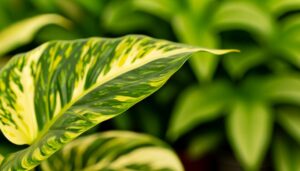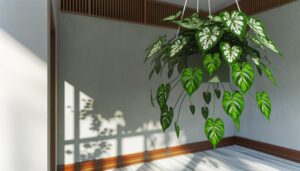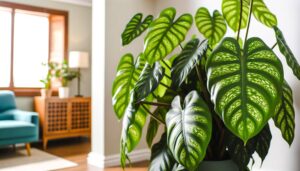Why Are My Philodendron Brasil Leaves Turning Yellow?
Philodendron Brasil leaves frequently turn yellow due to improper watering practices, such as overwatering or underwatering, which leads to root hypoxia or dehydration. Inadequate lighting conditions can disrupt photosynthesis, causing chlorosis.
Pest infestations from spider mites, aphids, or mealybugs extract essential plant sap, further leading to chlorosis. Nutritional deficiencies, particularly of nitrogen, potassium, and magnesium, manifest as leaf yellowing, while environmental stress from improper light, temperature fluctuations, and humidity imbalances exacerbates the issue.
Understanding these factors is critical to diagnosing and remedying yellowing leaves effectively. Detailed insights into each of these factors can illuminate the path to healthier plants.
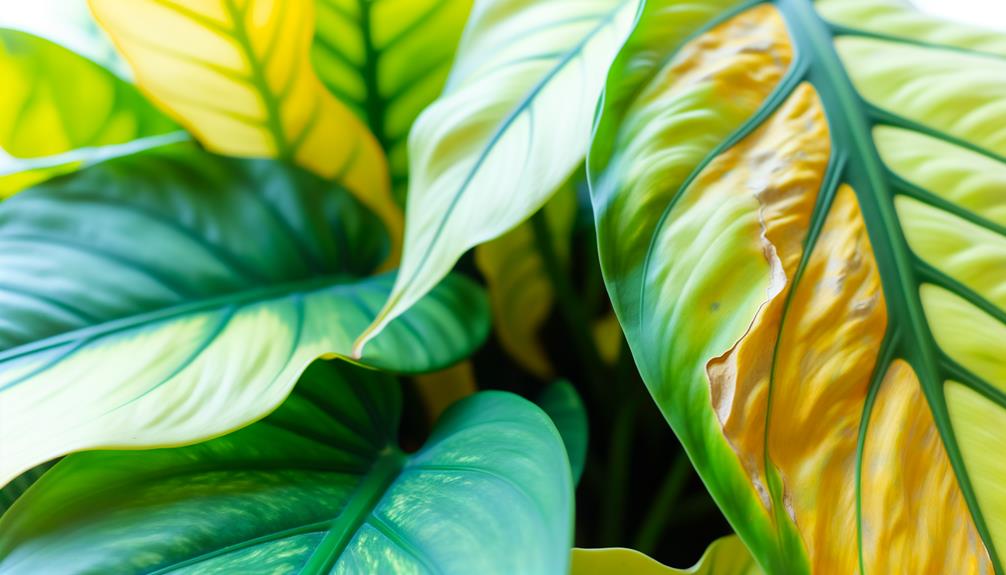
Key Takeaways
- Overwatering or underwatering leads to stress, causing leaf yellowing due to root rot or dehydration.
- Inadequate lighting, either too low or too intense, disrupts photosynthesis and results in yellowing leaves.
- Pest infestations like spider mites, aphids, and mealybugs extract sap, leading to chlorosis and yellowing leaves.
- Nutrient deficiencies, particularly in nitrogen, potassium, and magnesium, cause specific yellowing patterns on leaves.
- Environmental stress from improper light, temperature fluctuations, or low humidity causes leaf yellowing.
Improper Watering Practices
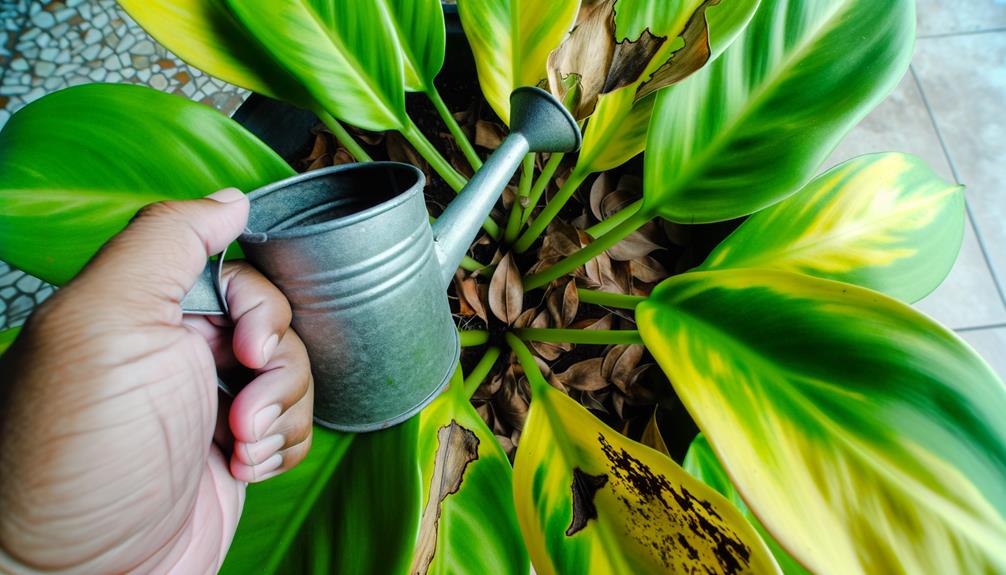
Improper watering practices, including both overwatering and underwatering, can stress Philodendron Brasil to a great extent, leading to chlorosis and eventual yellowing of the leaves. Overwatering results in waterlogged soil, which impedes oxygen availability to the roots, causing root hypoxia and subsequent root rot. This condition hinders the plant's ability to uptake essential nutrients, manifesting as chlorosis.
Conversely, underwatering leads to dehydration and reduced cellular turgor pressure, disrupting photosynthetic processes. Evidence-based horticultural practices recommend maintaining a consistent watering schedule and ensuring well-draining soil. Monitoring soil moisture levels using a hygrometer can help prevent these extremes.
Proper watering balance is essential for sustaining the physiological health of Philodendron Brasil, thereby preventing leaf yellowing and promoting overall plant vitality.
Inadequate Lighting Conditions
Subpar lighting conditions can impair the physiological functions of Philodendron Brasil, leading to leaf yellowing and overall plant decline. Philodendron Brasil thrives in bright, indirect light, and lack thereof can disrupt photosynthesis, causing chlorosis, where leaves lose chlorophyll and turn yellow.
Excessively low light levels inhibit the plant's ability to synthesize carbohydrates, essential for growth and health. Conversely, excessive direct sunlight can scorch leaves, also resulting in yellowing. Studies show that inadequate light exposure alters stomatal conductance, affecting water and nutrient uptake.
Ensuring an ideal light environment, ideally around 10,000–20,000 lux, can help mitigate these issues. Regularly monitoring light intensity and adjusting plant placement accordingly are crucial interventions to maintain the health and vibrancy of Philodendron Brasil foliage.
Pest Infestations
Pest infestations, particularly by spider mites, aphids, and mealybugs, can severely compromise the health of Philodendron Brasil, leading to chlorosis and subsequent leaf yellowing. These pests extract essential plant sap, depriving the leaves of crucial nutrients and causing cellular damage.
Evidence suggests that spider mites create fine webbing, aphids excrete honeydew fostering sooty mold, and mealybugs form waxy deposits, each impeding photosynthesis and promoting chlorosis. Regular inspection for these pests is critical, as early detection facilitates effective intervention.
Employing integrated pest management (IPM) strategies, such as neem oil application, insecticidal soaps, and biological control agents like ladybugs, can mitigate infestations and restore plant vigor. Ensuring best humidity and sanitation further deters pest proliferation.
Nutrient Deficiencies
Nutrient deficiencies frequently manifest in Philodendron Brasil as chlorosis, particularly when essential macronutrients such as nitrogen, potassium, and magnesium are insufficient. These deficiencies disrupt the plant's physiological processes, leading to yellowing leaves due to impaired chlorophyll production.
- Nitrogen Insufficiency: Characterized by uniform yellowing of older leaves, as nitrogen is mobile within the plant.
- Potassium Insufficiency: Manifests as yellowing leaf margins and tips, often accompanied by necrotic spots.
- Magnesium Insufficiency: Presents as interveinal chlorosis, where the leaf veins remain green while the areas between them turn yellow.
Addressing these deficiencies requires targeted fertilization strategies, ensuring that the nutrient composition of the soil meets the plant's metabolic demands. Neglecting these essential nutrients can result in stunted growth and diminished energy.
Environmental Stress Factors

Environmental stress factors, including improper light levels, temperature fluctuations, and humidity imbalances, can impair the health of Philodendron Brasil, leading to the yellowing of its leaves.
Insufficient or excessive light can disrupt photosynthesis, causing chlorosis. Ideal lighting conditions involve bright, indirect light.
Temperature fluctuations, particularly drops below 55°F (13°C), can induce cold stress, damaging cellular function. Best temperature ranges from 65°F to 80°F (18°C to 27°C).
Humidity imbalances, especially low humidity, can impede transpiration and nutrient uptake. Maintaining relative humidity between 60-80% is optimal.
Additionally, sudden changes in environmental conditions can exacerbate stress responses. Monitoring these factors and providing stable, appropriate conditions are essential for the robust health of Philodendron Brasil.
Conclusion
To sum up, the Philodendron Brasil, a seemingly indestructible botanical marvel, falls prey to the trifecta of horticultural neglect: improper watering practices, inadequate lighting conditions, and pest infestations.
Add to this nutrient deficiencies and environmental stress factors, and one might wonder if the plant has covertly enrolled in a survival reality show.
Nevertheless, with adherence to evidence-based care protocols, the Philodendron Brasil can shift from a state of chlorotic despair to lush health.

